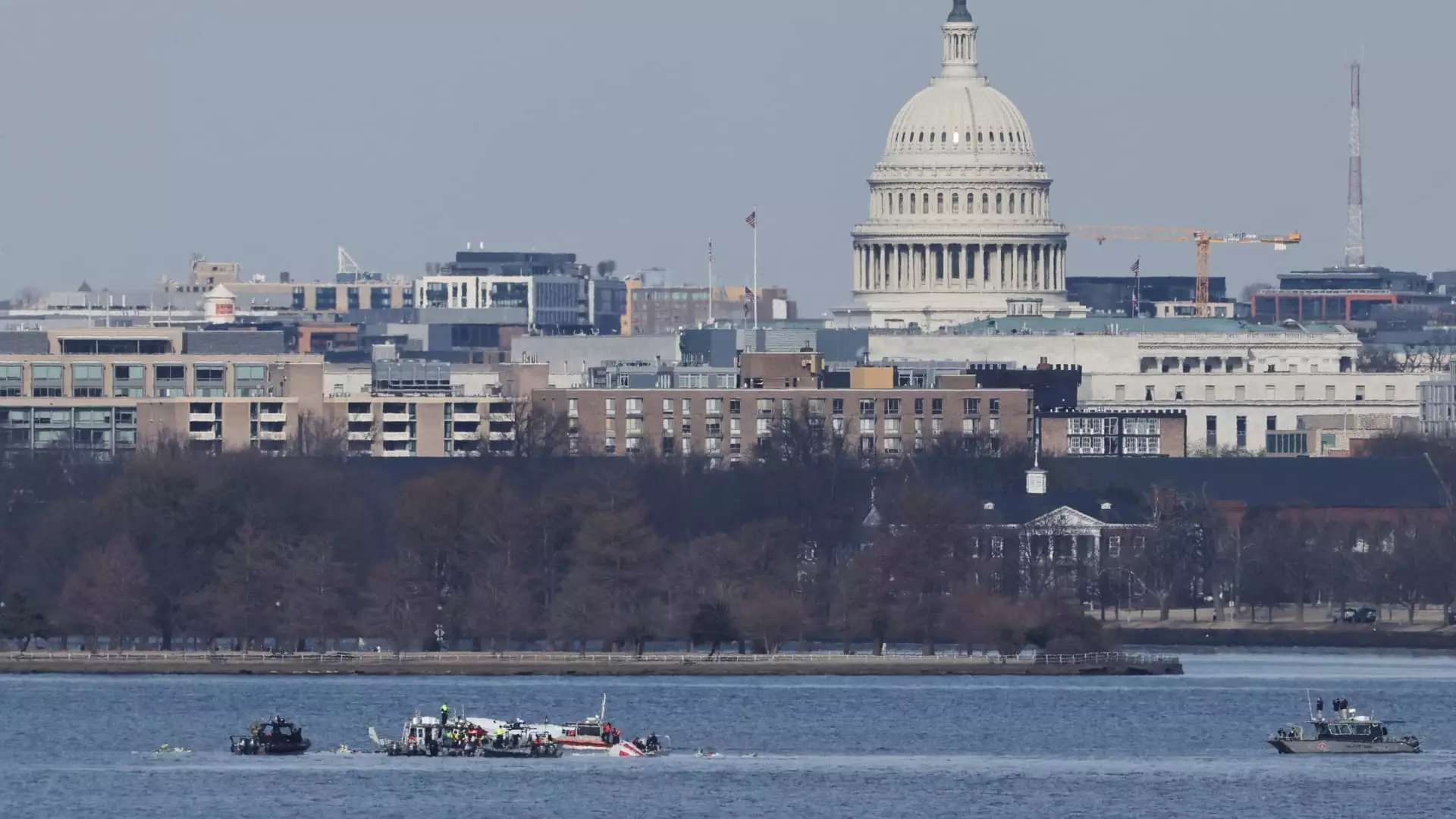On a seemingly ordinary Wednesday night, a catastrophic incident occurred over the Potomac River that left the nation in shock. An Army Black Hawk helicopter and an American Airlines jetliner collided, resulting in the deaths of all 64 passengers on board the flight, American Airlines Flight 5342, along with the three crew members aboard the helicopter. With the tragedy taking place near the highly trafficked Reagan National Airport in Washington, D.C., questions surrounding the events leading up to the crash have intensified, igniting a wave of aviation safety concerns unprecedented in recent history.
This incident marks the first fatal crash involving commercial aviation in the United States since 2009. Prior to this, the aviation industry had enjoyed an unprecedented safety record, making this crash particularly alarming. Investigators from the National Transportation Safety Board (NTSB) have commenced an extensive inquiry into the factors that contributed to this devastating incident, with early reports suggesting potential altitude violations by the military helicopter.
American Airlines Flight 5342, operated by PSA Airlines—a regional branch of American Airlines—was on its final approach to runway 33 when the tragedy unfolded. The aircraft, a Bombardier CRJ-700, was flying at approximately 300 feet, which is standard procedure during landing protocols. However, military regulations stipulate that helicopters operating in the vicinity of Washington, D.C., must maintain an altitude of no higher than 200 feet. This discrepancy raises alarming questions regarding situational awareness and adherence to aviation regulations.
Defense Secretary Pete Hegseth has emphasized that the Black Hawk was engaged in a standard proficiency training flight, which should have adhered to the same safety protocols expected of commercial aircraft. Adding to the complexity, the region surrounding Washington, D.C., is characterized by dedicated helicopter routes designed to manage the dense air traffic that comes with such a politically significant area. NTSB member Todd Inman noted the structured tracks that helicopters are expected to follow, raising concerns about possible deviations by the military helicopter involved in the collision.
In light of this tragedy, the Federal Aviation Administration (FAA) swiftly moved to impose new flight restrictions in the Washington, D.C., area, particularly around Reagan National Airport. The restrictions detail specific zones where helicopter operations could take place, aiming to minimize interaction with commercial air traffic in the densely populated airspace. These new regulations, while urgent, highlight a critical question: Were existing regulations insufficient to avert such a deadly occurrence, or was there a failure within the system to enforce them adequately?
A retired airline pilot and aviation safety consultant, John Cox, has brought attention to the factors affecting pilots during landing attempts amid such complexity. When aligning a flight for landing, a pilot’s concentration is primarily geared towards safely descending onto the runway to ensure a safe stop. This concentration, set against the backdrop of a busy Washington, D.C., airspace, emphasizes the need for clear communication and coordination among multiple air traffic control sectors.
The NTSB has begun recovering vital evidence from both aircraft, including cockpit voice and flight data recorders from the American Airlines jetliner, for detailed analysis. NTSB Chair Jennifer Homendy has stressed the significance of thorough investigations, underscoring the necessity to ascertain the accuracy of data, even amid rising public speculation regarding potential altitude breaches. Furthermore, early statements from political figures, including President Trump and Secretary Hegseth, have sparked frustration among investigation experts who fear that premature conclusions may undermine the integrity of the inquiry.
Additionally, reports indicate that staffing issues at the Reagan National Airport may have contributed to inadequate oversight during a time when air traffic remains at peak levels. A preliminary FAA safety report suggests that regular protocols were not observed that evening. Particularly alarming, a supervisor granted permission for an air traffic controller to depart their shift early, raising concerns about the potential strain on remaining personnel responsible for managing both helicopters and commercial flights.
The tragic crash over the Potomac River serves as a sobering reminder of the complexities inherent in managing air traffic within densely populated regions. As the NTSB continues its investigation, the focus will likely shift toward forging better systems for collaborative safety across military and civilian flight operations. The aviation community must reflect deeply on this incident, not only to honor the memory of those lost but also to strive for enhanced safety standards that can prevent future tragedies of this magnitude. The time is ripe for a critical reassessment of protocols, regulatory enforcement, and the coordination of various aerial operations in and around America’s capital.

